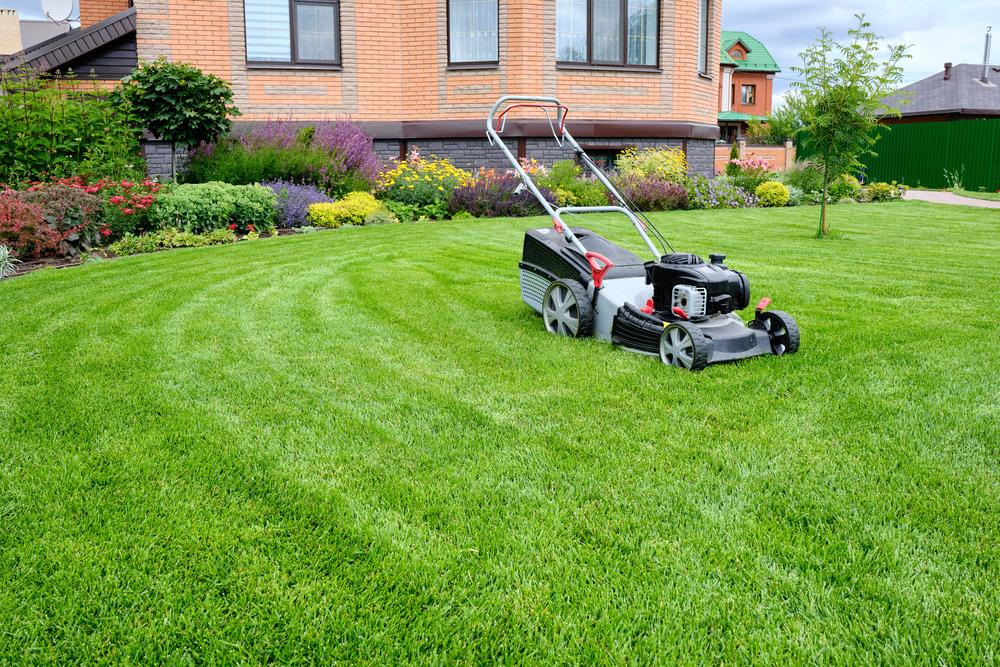
The Benefits of Regular Lawn Maintenance in Mid Missouri
Picture this: two neighboring yards side by side in Sedalia. One looks lush, deep green, thick, and healthy. The other shows patchy spots, weeds creeping in, and signs of stress from drought. The difference? The first yard has had consistent care all season.
Regular lawn maintenance isn’t just about appearances — it’s about preventing problems, saving money, and building a stronger, more resilient turf over time. In this article, we’ll explore what “regular lawn maintenance” really means in Mid Missouri, why it’s worth the effort (or investment), and how you can get the most out of it (whether DIY or hiring a pro).
What Does Regular Lawn Maintenance Mean?
Before we dive into benefits, let’s clarify what we mean by “regular maintenance” in the lawn care context. In Mid Missouri, this typically includes:
Mowing on a consistent schedule (with proper height and blade sharpness)
Weed control (pre-emergent, post-emergent, spot treatments)
Fertilization and soil amendments (based on soil tests)
Aeration (core aerifying to relieve compaction)
Overseeding / overseeding thin spots
Edging, trimming, and bed maintenance
Irrigation and watering management
Pest, disease, and insect monitoring
In Missouri’s climate and soil conditions, these tasks have to be timed and executed properly for them to deliver results. For example, mowing too low or ignoring soil compaction weakens your lawn’s natural defenses. The University of Missouri extension’s turf resources emphasize mowing at an optimal height and avoiding scalping to reduce stress on the grass. extension.missouri.edu+1
Core Benefits of Regular Lawn Maintenance
Here are the key advantages you (or your property) get when you commit to regular care:
1. Improved Curb Appeal & Property Value
A well-kept lawn is often the first impression people see. It signals pride, care, and quality. Studies show a maintained landscape can boost property value, and neglect can work in the opposite direction. RYAN Lawn & Tree
2. Healthier, More Resilient Grass
Regular mowing, fertilizing, and aeration help promote deeper root systems and denser turf. Stronger turf competes better against weeds, resists drought, and recovers faster from stress. extension.missouri.edu+1
3. Weed, Pest & Disease Prevention
When the lawn is healthy and well maintained, invasive weeds and pests have a harder time gaining a foothold. Regular treatments and vigilant monitoring catch problems early — reducing the risk of heavy infestations or disease outbreaks.
4. Better Soil Structure & Water Management
Aeration relieves compaction, allowing air, water, and nutrients to penetrate the root zone more easily. That means less runoff, better drainage, and more efficient irrigation.
5. Cost Savings Over Time
Neglected lawns often require expensive corrective work: dethatching, reseeding, pest treatments, soil remediation. Regular maintenance spreads those costs over time and avoids drastic fixes.
6. Environmental & Ecosystem Benefits
A healthy lawn helps control soil erosion, filters pollutants, anchors soil, and contributes to local air quality. In Missouri, properly managed turf helps manage runoff into streams, protecting water quality. RYAN Lawn & Tree
How to Structure a Regular Lawn Maintenance Program
To capture these benefits, here’s a practical guide to structuring (or evaluating) a maintenance program for Mid Missouri lawns.
Frequency & Timing
Mowing: Weekly or biweekly, depending on growth. Use the “one-third rule” — never remove more than one-third of blade height at once.
Fertilization: Typically 2–4 times per year, depending on grass type and soil test results.
Aeration: Best done once or twice per year; often in spring or fall for cool-season grasses.
Weed & pest checks: Monthly or more often during peak growth.
Overseeding: Late summer or early fall is ideal for cool-season species.
Key Considerations & Best Practices
Know your grass type (cool-season vs warm-season) and tailor your schedule and heights accordingly. extension.missouri.edu
Always sharpen mower blades — a clean cut heals faster and lowers disease risk. extension.missouri.edu
Avoid scalping — cutting too low weakens turf and invites weeds. missouribotanicalgarden.org+1
Use soil tests to guide fertilization — not all lawns need the same nutrient mix.
Manage clippings smartly — returning them (mulching) can provide up to 25–30% of your nitrogen needs. extension.missouri.edu+1
Adjust watering — aim for deep, infrequent watering rather than frequent light watering.
Monitor and adapt — inspect regularly for pests, fungus, or stress and respond early.
DIY vs Professional Program
For smaller lots, homeowners can often handle basic mowing, edging, and light fertilizing.
For more complex needs (soil corrections, major aeration, pest/disease control, large properties), hiring a lawn care professional is wise.
A professional crew brings consistency, specialized equipment, and experience in timing and applications in the Mid Missouri climate.
FAQs — What Homeowners Often Ask
What does “regular” really mean in this region?
It means doing core tasks (mowing, weed control, fertilization, monitoring) frequently and consistently—typically every week or every few weeks during the growing season.Will I ruin my lawn if I mow too short?
Yes. Cutting too aggressively weakens the turf, stresses it, and opens the door to weeds. The “one-third rule” and recommended mowing heights help avoid that.Is mowing clippings harmful?
Usually not. Research (especially from MU Extension) shows grass clippings decompose fast and contribute nutrients, and do not cause thatch buildup when managed correctly. extension.missouri.eduHow much will maintenance cost?
Costs vary depending on lot size, soil condition, frequency of service, and needed treatments. But regular maintenance tends to be more predictable and lower than occasional big repairs.What if I skip maintenance for a year?
You risk weed invasion, compaction damage, bare patches, soil problems, pest or disease surge, and high corrective costs.
Conclusion
A regular lawn maintenance program in Mid Missouri is more than just mowing—it’s a proactive investment in soil health, turf strength, aesthetics, and home value. Whether you do it yourself or partner with a professional, consistency is what unlocks the benefits over time.
If you’d like help building a custom maintenance schedule or having the pros handle it for you in Sedalia or nearby, we provide mowing, fertilization, aeration, weed control, pest monitoring, and full-service lawn care.